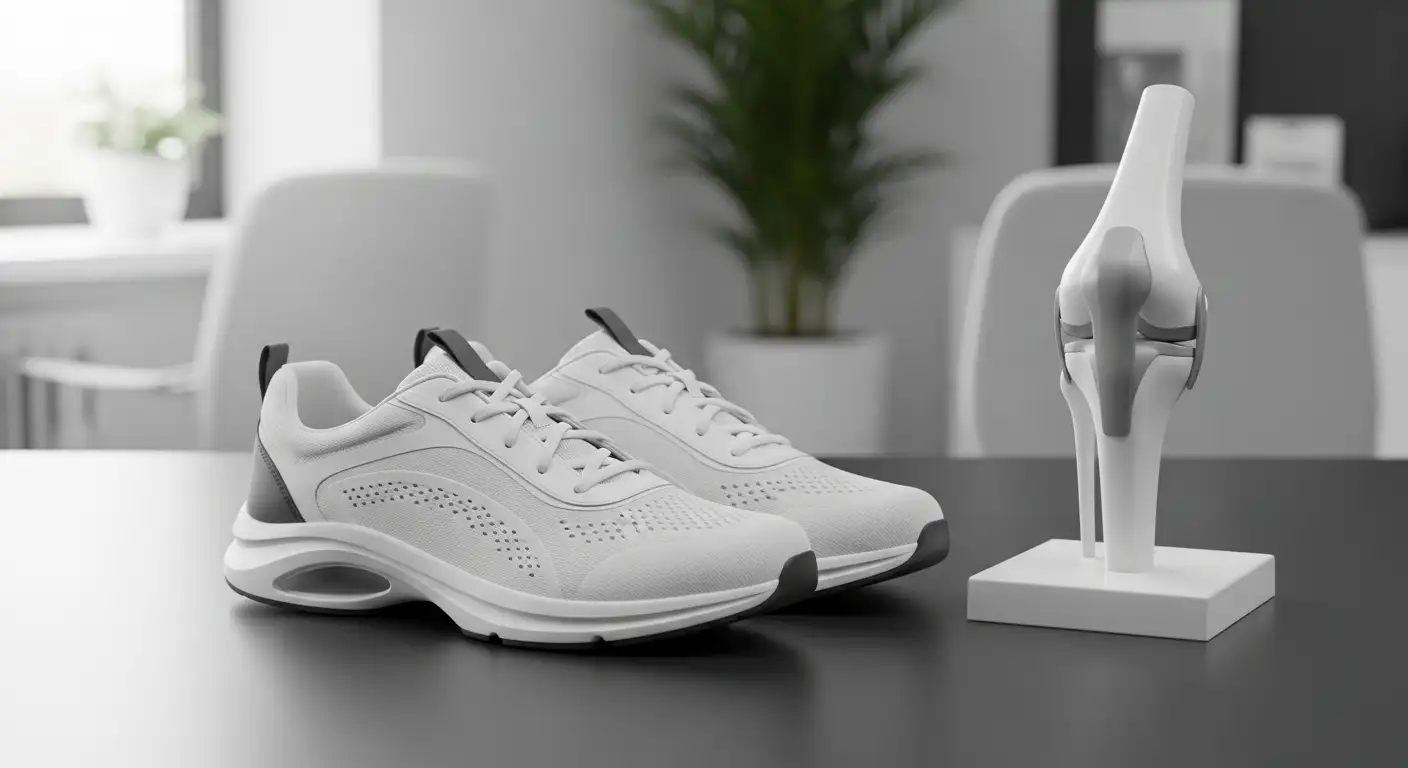
Understanding Patellar Maltracking
Definition and Causes of Maltracking
Patellar maltracking, also referred to as patellar tracking disorder, describes the misalignment of the kneecap during movement. This condition often results in the kneecap (patella) shifting sideways rather than following the normal path along the femur. Such misalignment can lead to discomfort, knee pain, and mobility challenges. It is commonly associated with various factors, including muscle imbalances, overuse, trauma or injury, tightness in surrounding structures, alignment issues, and genetic factors [1].
To provide clarity on the prevalence of implicated factors, the following table outlines some of the known causes:
CauseDescriptionMuscle ImbalancesWeakness or tightness in leg muscles affects alignment.OveruseRepetitive activities may strain the knee structures.Trauma or InjuryPrevious injuries can impact patellar position.Alignment IssuesAbnormal alignment of the knee joint or legs.Genetic FactorsInherited anatomical features can increase risk.
Imaging techniques, particularly MRI, play a crucial role in diagnosing patellar maltracking. Specialized imaging helps identify various morphological risk factors such as trochlear dysplasia, patella alta, and lateral patellar tilt [2].
Between 15% and 45% of patients may experience recurrent patellar instability. Several risk factors contribute to this increased likelihood, particularly in women, those with a family history of instability, and individuals with anatomical considerations such as patella alta, trochlear dysplasia, and increased TT-TG distance [2]. Understanding these causes and risk factors is crucial for effective management and treatment options.
Symptoms of Patellar Maltracking
Signs to Watch Out for
Individuals experiencing patellar maltracking may encounter a variety of symptoms that can significantly impact their daily activities. Recognizing these signs early can aid in seeking appropriate medical attention. The following are common symptoms associated with patellar maltracking:
SymptomDescriptionKnee PainPain can arise in the front of the knee and varies depending on the severity of the disorder. High levels of pain may occur, especially in cases of dislocation. HealthlineGrinding or Popping SensationsA grinding or clicking noise may occur when moving the knee, often indicative of maltracking issues.Feeling of InstabilityThere may be a sensation of the knee "giving out" or buckling during activities such as walking or bending. This can lead to fears of falling. (Dr. Jon Nzoma)Swelling Around the KneeSwelling may be present, which can result from irritation or inflammation of the knee joint.Difficulty Bending or StraighteningIndividuals may struggle with bending or straightening the knee, impacting mobility and overall functionality.Visible DeformityIn more severe cases where dislocation occurs, the leg may appear bent or out of shape. This necessitates immediate medical attention [3].Numbness or Partial ParalysisThis can occur below the dislocation due to pressure on nerves and blood vessels, indicating potential emergencies that require quick intervention.
If any of these symptoms are observed, it is advisable to consult a healthcare professional for an accurate diagnosis and appropriate treatment options. Understanding the symptoms of patellar maltracking is an essential step towards effective management of knee pain and overall knee health. For more related topics, consider learning about knee bends to strengthen the knee or the lateral release knee procedure if necessary.
Diagnosis and Evaluation
Methods for Identifying Maltracking
Diagnosing patellar maltracking can be challenging due to its association with various knee conditions that present with similar symptoms. The evaluation process typically includes a combination of physical examinations and imaging studies, which help in accurately identifying the issue.
Physical Examination
A physical examination is usually the first step in diagnosing patellar maltracking. This process may involve:
Table 1 below outlines various assessment techniques used during physical examinations:
Assessment TechniqueDescriptionPatellar Glide TestEvaluates the patella’s movement in the grooveApprehension TestChecks for discomfort when moving the patellaSquat TestObserves any irregular movement during squat
Imaging Studies
Imaging techniques play a crucial role in confirming a diagnosis of patellar maltracking. The most common methods include X-rays and MRI scans.
MRI Measurement Features
MRI assessment involves various measurements and features to evaluate patellar maltracking:
Measurement FeatureImportanceInsall–Salvati IndexAssesses the position of the patella in relation to the tibiaCaton–Deschamps IndexEvaluates length ratios to assess patella altaPatellar Tilt AngleMeasures the tilt of the patella in the groovePatellofemoral AngleAnalyzes overall alignment of the kneeTrochlear DysplasiaDetermines if the groove for the patella is adequately formed
MRI is vital in identifying specific structural changes associated with maltracking, thus allowing for appropriate treatment strategies to be developed [2].
Combining the results from physical examinations and imaging studies leads to a comprehensive evaluation of patellar maltracking. Understanding these diagnostic methods aids in developing a personalized management plan for individuals facing this condition. For further insights into knee health, explore our articles on knee bends and lateral knee anatomy.
Treating Patellar Maltracking
Patellar maltracking can cause discomfort and impact mobility. Treatments generally fall into two categories: conservative approaches and surgical interventions.
Conservative Approaches
Conservative treatment options for patellar maltracking focus on alleviating symptoms and improving knee function. Common strategies include:
Common symptoms associated with patellar maltracking include:
These approaches focus on addressing the underlying issues that contribute to maltracking and can be beneficial in many cases. For specific exercises, the RICE method is essential for recovery, while activities like knee bends and stretches for the gastroc and glute med may also strengthen the knee area.
Treatment MethodDescriptionRICEReduces swelling and painKnee BracesProvides stabilityKnee TapingOffers patellar supportPhysical TherapyStrengthens supporting muscles
Surgical Interventions
For persistent cases of patellar maltracking that do not respond to conservative treatments, surgical interventions may be necessary. The surgical management typically involves either soft tissue or bony procedures designed to restore proper alignment and function.
Each patient's surgical options are tailored based on their individual history, symptoms, and radiologic findings. More information can be found in the article on lateral release knee and the role of procedures in addressing knee stability issues.
Surgical OptionDescriptionSoft Tissue RepairsStabilizes the patella through tissue adjustmentsTibial Tubercle TransferCorrects tendon alignmentTrochleoplastyDeepens the patellar groove for enhanced stability
Effective treatment for patellar maltracking ultimately depends on a thorough evaluation and understanding of the individual's condition.
Preventing Patellar Maltracking
Strategies and Considerations
Preventing patellar maltracking is essential for maintaining knee health and avoiding potential pain or injury. Several strategies can be employed to reduce the risk of developing this condition.
Regular physical activity plays a key role in maintaining strength and flexibility in the knee joint. Consider incorporating exercises that focus on the quadriceps, hamstrings, and hip stabilizers. Exercises like
Footwear can significantly influence knee alignment. Shoes that provide appropriate support can help counteract the effects of anatomical defects, such as flat feet or fallen arches, which may lead to misalignment and contribute to patellar maltracking
Achieving a balance between the major muscle groups around the knee is crucial. Weak thigh muscles can lead to abnormal tracking of the patella. Specific stretches, like the
FactorStrategiesPhysical ActivityRegular exercises for knee strengthFootwearSupportive shoes tailored to foot shapeMuscle BalanceStretches and targeted workouts
Following proper rehabilitation protocols after injuries can help prevent recurrent instability. Engaging with a physiotherapist to establish a tailored rehabilitation program can be beneficial. Rehabilitation typically focuses on strengthening exercises, mobility training, and proprioception to enhance stability.
Understanding and monitoring anatomical factors, such as the Q angle and patella shape, can aid in early detection of potential issues. Conditions like patella alta or trochlear dysplasia increase the risk of maltracking. Individuals who are aware of these risks may benefit from preventative interventions.
Consultation with healthcare professionals, such as sports physicians or physiotherapists, can provide insights into personalized prevention strategies. They can recommend specific exercises, evaluate muscle imbalances, and suggest effective treatment plans.
Implementing these strategies may significantly reduce the likelihood of patellar maltracking, allowing individuals to maintain an active lifestyle and protect their knee health. For specific exercise examples, consult our article on how to instantly fix knee pain when going up and down stairs or dive deeper into knee brace options for ACL tears for additional support.
Surgical Management Options
Soft Tissue Versus Bony Procedures
Surgical options for managing patellar maltracking can be categorized into soft tissue procedures and bony procedures. Both types aim to restore proper alignment and stability of the patella but vary in approach and technique.
Soft Tissue Procedures
Soft tissue procedures involve repairing or tightening injured soft tissues to improve patellar stability. Common techniques include:
These techniques are often effective for patients experiencing mild to moderate maltracking issues.
Bony Procedures
Bony procedures target the underlying structural alignment of the knee. These surgeries include:
Bony procedures are typically recommended for patients with more severe maltracking or structural issues that contribute to recurrent instability.
Procedure TypeExamplesMain FocusSoft TissueLateral release, MPFL repair, Medial imbricationRepair and tighten soft tissues for stabilityBonyTibial tubercle transfer, TrochleoplastyCorrect alignment through bone modification
The choice between soft tissue and bony procedures is determined by the individual patient's history, severity of the maltracking, and associated radiographic findings. Understanding these options can aid those seeking effective solutions for knee pain related to patellar maltracking. For further information on knee exercises that can support recovery, visit our article on knee bends.
References
[2]:
[3]:
[4]:





